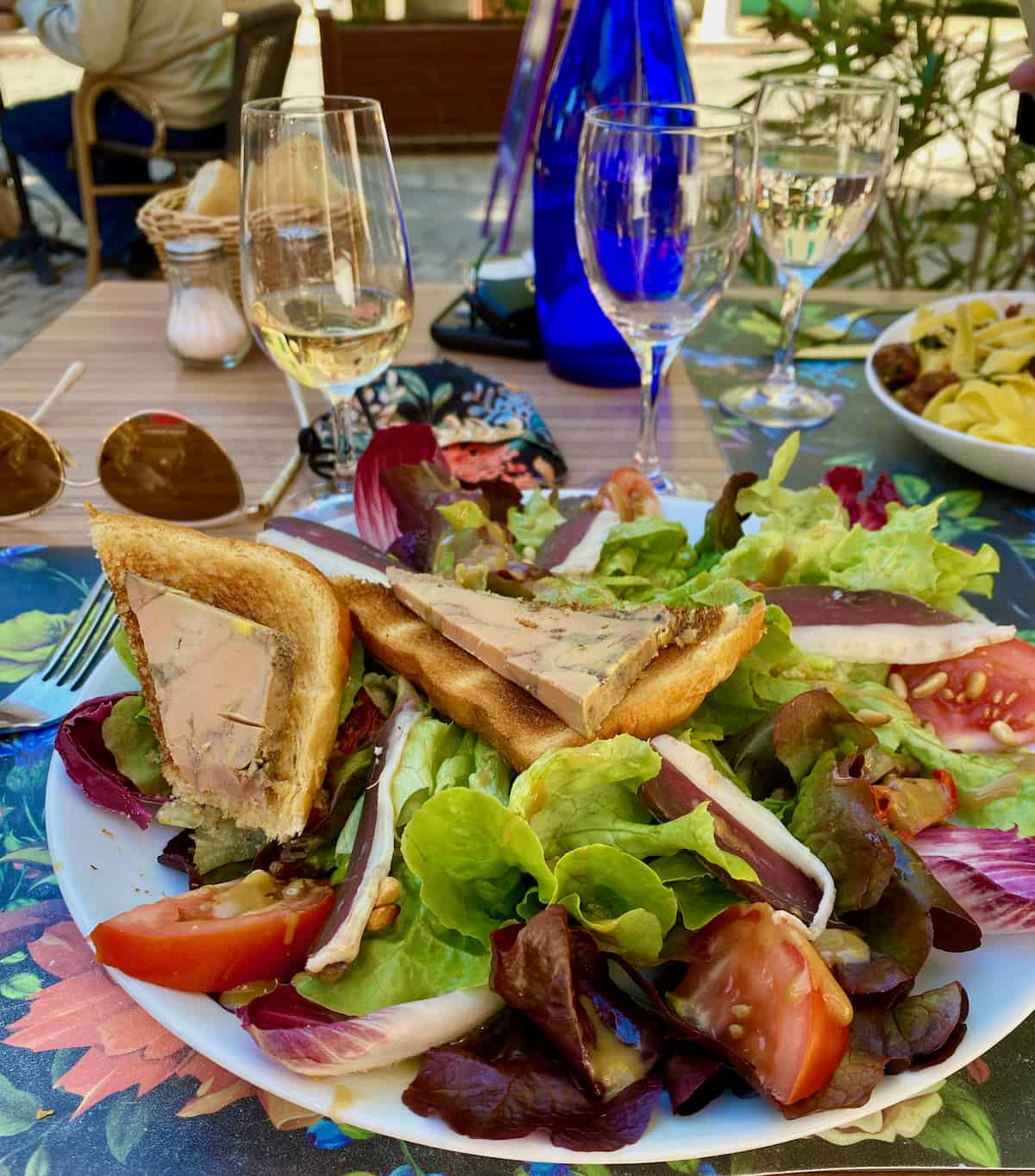
Many people ask Is Gorges du Verdon worth visiting.
Absolutely, Gorges du Verdon, an UNESCO World Heritage Site is a world of green and blue located in southeastern France in the heart of Provence. It is an incredible gorge that is often referred to as the Grand Canyon of Europe though it’s nothing even close in my opinion. Verde or green aptly describes the color, hence the name. This is no desert, it’s an extremely lush gorge with steep canyons (nearly half a mile tall in areas) ideal for hikers, cyclists, kayakers, and especially rock climbers with its dramatic line of limestone cliffs. It is surrounded by quaint little Provençal towns that serve homemade foie gras and hearty duck dishes. Verdon Gorge has striking turquoise-green water. This is caused by the tiny rock particles known as glacial flour. Hence the name. A bit too chilly for swimming the day we went and should’ve gone boating instead.
The Gorges du Verdon stands as one of Europe’s most expansive canyons, offering a captivating geological history. Approximately 250 million years ago, this region lay submerged beneath the waters. It was the dynamic movement of geological plates, coupled with the gradual retreat of glaciers, that set the stage for the remarkable formation of this river canyon over time.
Getting to the Gorge du Verdon
You can only get to the Gorge du Verdon by car. The closest train stations are Nice, Marseilles, Avignon and Aix-en-Provence. Depending on your starting point, the drive to Gorges du Verdon can be quite an adventure (we drove 2.5 hours from Nice) and if you take the toll roads, be sure you are prepared with a credit card or cash as you approach. The scenic route has narrow, picturesque roads, often just one lane, and meanders through mountain tunnels.
If driving in France is not an option, there are several excellent tours that visit the Gorge as well as the lavender fields (seasonal).
On our return from Gorges du Verdon, we visited Aix (pronounced X) a charming little university town with difficult parking. We’d have stayed closer to both had we known what a long day it would be. En route back to Nice, we passed the glorious lavender fields renowned in this area – visits there must be timed seasonally.

Nearby Cities to the Gorge du Verdon
The primary circuit unfolds between the charming locales of Aiguines and Moustiers-Sainte-Marie in the west, extending to Trigance and Castellane in the east. Nestled at the entrance to the Verdon Gorge and perched above the picturesque Lac de Sainte Croix, Aiguines (where we had lovely fois gras salad) is a charming village perfectly situated amidst the pristine beauty of its natural surroundings. This idyllic destination boasts unparalleled vistas of the Verdon Canyon (accessible via the D71 and D23 routes) and the stunning Sainte Croix lake.
Aiguines is home to a splendid privately-owned chateau, steeped in Renaissance history. Meticulously restored with its gleaming roof tiles, this architectural gem commands a regal presence overlooking the lake, affording visitors with awe-inspiring panoramas that stretch across the Valensole plateau, the foothills of the Alps, and the enchanting Luberon mountain range.
For those seeking an extra dose of natural wonder, consider embarking on the Route des Crêtes, a supplementary loop tracing the perimeter of the Gorges du Verdon. This route boasts its own set of stunning vistas, though the roads are notably narrower and less shielded compared to the main circuit. It primarily operates as a one-way route in a clockwise direction, commencing just east of La Palud-sur-Verdon, situated along the northern rim of the gorges.


